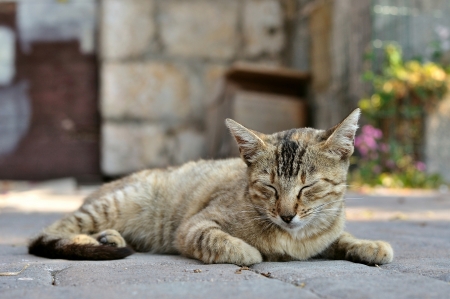Understanding Your Rescue or Adopted Cat’s Background
Bringing a rescue or adopted cat into your UK home is a heartwarming experience, but it’s essential to appreciate how their background can influence their eating habits. Many cats from shelters or rescues have endured unpredictable environments, fluctuating food sources, and in some cases, traumatic experiences. These factors can make them more cautious or even anxious when introduced to new foods or feeding routines. For example, a cat rescued from the streets of London may have become used to scavenging for scraps, while another from a rural shelter might only be familiar with basic kibble. Shelter life itself can also play a significant role; communal feeding situations often lead to rushed eating or resource guarding behaviour. Additionally, cats that have experienced neglect or trauma may associate mealtimes with stress or uncertainty. Understanding these possible influences not only helps you empathise with your new companion but also guides you in creating a safe, predictable feeding environment tailored to their unique needs.
2. Choosing Appropriate Food for UK Cats
Selecting the right food for your rescue or adopted cat is essential for their health and wellbeing, especially during the transition period in their new home. In the UK, a variety of high-quality, vet-recommended cat food brands are readily available, catering to different dietary needs and preferences.
Understanding Wet vs Dry Food Options
When deciding between wet and dry food, consider your cat’s individual requirements. Wet food tends to have higher moisture content, which can help with hydration—especially important if your cat isn’t keen on drinking water. Dry food, on the other hand, is convenient to store and serve, and may benefit dental health by reducing tartar build-up. Many UK cat owners opt for a combination of both to provide variety and balanced nutrition.
| Type | Pros | Cons |
|---|---|---|
| Wet Food | Higher moisture content, palatable, easier for older cats | Shorter shelf life after opening, more expensive per serving |
| Dry Food | Convenient, helps clean teeth, cost-effective | Lower moisture content, may not suit all digestive systems |
Recommended UK Cat Food Brands
The UK market offers several reputable brands endorsed by veterinarians. Look for options that specify meat as the first ingredient and avoid unnecessary fillers or artificial additives. Here are some popular choices:
- Royal Canin: Known for breed-specific and sensitive stomach formulas.
- James Wellbeloved: Hypoallergenic recipes with natural ingredients.
- Lily’s Kitchen: Grain-free options using responsibly sourced meats.
- Harringtons: Affordable natural food without artificial colours or flavours.
- PURINA ONE: Balanced nutrition with variants for kittens and adults.
Catering to Sensitive Stomachs
If your rescue or adopted cat has a sensitive stomach or history of digestive issues, gradual diet changes are key. Introduce new foods slowly over 7-10 days by mixing increasing amounts of the new food with their current one. For cats with allergies or intolerances, hypoallergenic diets such as those offered by James Wellbeloved or Royal Canin’s Sensitivity range can be beneficial. Always consult your local vet before making significant dietary adjustments.
![]()
3. Gradual Food Transition Strategies
When welcoming a rescue or adopted cat into your UK home, it’s vital to introduce new foods slowly to support their delicate digestive system. Sudden changes in diet can lead to upset tummies, which may cause unnecessary stress for both you and your feline friend. Start by mixing a small amount of the new food with their current diet—about 10-20% new to 80-90% old—and gradually increase the proportion over seven to ten days. This measured approach gives your cat’s gut time to adjust and helps them accept the unfamiliar taste and texture.
Keep a close eye on your cat during this transition period. Look out for signs such as vomiting, diarrhoea, or refusal to eat, which could indicate that the new food doesn’t agree with them. If you notice any issues, slow down the pace of change or consult your vet for advice tailored to your specific circumstances. Remember, consistency is key—avoid switching brands or flavours too frequently, as cats thrive on routine and stability. Using a consistent feeding schedule and sticking with one type of high-quality, species-appropriate food will help build trust and security in your cat’s new environment.
In typical British homes, many cat owners prefer wet food for hydration or dry kibble for convenience, but regardless of your choice, patience is essential during this settling-in phase. By introducing new foods slowly and monitoring their reaction closely, you’re setting the stage for happy mealtimes and a healthy bond with your newly adopted companion.
4. Establishing a Feeding Routine
Setting up a regular feeding routine is essential for helping your rescue or adopted cat feel safe and settled in their new UK home. British cats thrive on consistency, so establishing set meal times and using familiar accessories can significantly reduce stress during their transition period. Below, we’ll explore best practices for creating a successful feeding schedule, determining portion sizes, and choosing the right accessories with a distinctly British touch.
Setting Up a Consistent Schedule
Cats are creatures of habit, and rescue cats especially benefit from predictability. In the UK, most cat owners opt for two main meals per day – one in the morning and one in the evening. This mirrors the natural hunting behaviour of felines and helps avoid issues like overeating or anxiety around food.
Sample Daily Feeding Timetable
| Time | Meal | Notes |
|---|---|---|
| 7:30 am | Breakfast (wet or dry food) | Quiet spot away from busy areas |
| 6:00 pm | Dinner (wet or dry food) | Same location as breakfast for consistency |
Portion Sizes: Getting It Right
Determining the correct portion size depends on your cat’s age, weight, activity level, and health. Overfeeding is a common issue among UK pets; always check the feeding guidelines on your chosen British brand of cat food and consult your local vet if you’re unsure. Here’s a rough guide:
| Cat Weight (kg) | Daily Wet Food Portion (g) | Daily Dry Food Portion (g) |
|---|---|---|
| 2-3 kg | 120-180 g | 30-40 g |
| 4-5 kg | 200-250 g | 50-65 g |
| 6+ kg | 260+ g | 70+ g |
British Feeding Accessories & Methods
The UK market offers a range of cat feeding accessories that can enhance your pet’s experience. Ceramic bowls are popular for their durability and ease of cleaning, while non-slip mats help keep mealtime tidy. Raised feeders are increasingly common in British homes, especially for older cats with joint issues. For water, many Brits prefer filtered pet fountains to encourage hydration.
- Ceramic or stainless steel bowls: Hygienic and stylish options that prevent whisker fatigue.
- Treat puzzles: A fun British trend that encourages mental stimulation during snack time.
- Avoid plastic dishes: They can harbour bacteria and cause chin acne in sensitive cats.
- Scoop or measuring cup: Essential for accurate portion control—a must-have in every British cat household!
A Few Extra Tips for UK Cat Owners:
- If you feed both wet and dry foods, split portions accordingly and always provide fresh water.
- Avoid sudden changes—gradually introduce new foods over 7–10 days to prevent upset tummies.
- If using automatic feeders (a popular option when working long hours), ensure they’re compatible with UK plug sockets and have backup batteries.
- Cats love routine: try to keep meal times within half an hour of the usual time each day, even on weekends.
By sticking to these best practices, using locally available accessories, and paying attention to portion sizes, you’ll create a predictable environment where your rescue or adopted cat can relax and thrive in their forever home here in the UK.
5. Creating a Comfortable Feeding Environment
Establishing a safe and stress-free feeding area is vital for rescue or adopted cats, especially when introducing them into a typical British household that may already have other pets. Every cat deserves its own secure dining spot where it can eat peacefully without feeling threatened or rushed.
Choosing the Right Spot
Select a quiet, low-traffic area of your home—perhaps a cosy corner of the kitchen or utility room. British homes often have open-plan spaces, so consider using barriers or screens to provide privacy if needed. Avoid placing bowls near noisy appliances like washing machines, as sudden sounds can startle nervous cats.
Individual Bowls for Each Cat
If you have multiple pets, always provide separate food and water bowls for each cat. This minimises competition and reduces the risk of resource guarding—a common source of feline stress. In multi-cat households, try to position bowls out of direct sight from one another, using cupboards or furniture as visual dividers if space allows.
Maintaining Cleanliness and Routine
Keep feeding areas clean by washing bowls daily and wiping up spills promptly. British weather can mean muddy paws, so place easy-to-clean mats under bowls to protect floors. Stick to a regular feeding schedule; predictability helps rescue cats feel more secure in their new environment.
Introducing New Cats to Existing Pets
When welcoming a new rescue cat into a home with resident animals, supervise initial mealtimes. Feed newcomers separately at first, gradually moving bowls closer over time as trust develops. Never force interaction during feeding—let each cat dine at its own pace to foster confidence and comfort.
With patience and careful planning, you can transform mealtimes into calm, positive experiences that help your adopted cat settle happily into their new British home.
6. When to Seek Professional Advice
While most rescue or adopted cats settle into their new homes with time, certain situations call for the expertise of a UK vet or feline behaviourist. If your cat persistently refuses food, experiences dramatic weight loss, vomits regularly, or shows signs of distress around mealtimes, it’s essential to consult a professional as soon as possible. Sometimes, underlying health conditions such as dental issues, gastrointestinal problems, or allergies can make eating uncomfortable for cats newly arrived from shelters or foster homes.
Beyond physical health, behavioural challenges—like aggressive guarding of food, extreme anxiety during feeding, or hiding at mealtimes—may require specialist intervention. In the UK, many local vet practices have feline-friendly staff trained in handling rescue pets with unique backgrounds. Additionally, certified feline behaviourists registered with organisations like the Association of Pet Behaviour Counsellors (APBC) or International Cat Care can provide tailored advice and home visits.
For ongoing support, seek out local cat charities and adoption agencies such as Cats Protection or Blue Cross. These organisations often host workshops and offer telephone helplines specifically for adopters facing feeding or adjustment concerns. Remember, seeking guidance early not only ensures your cat’s wellbeing but also helps build a trusting relationship between you and your new companion.


